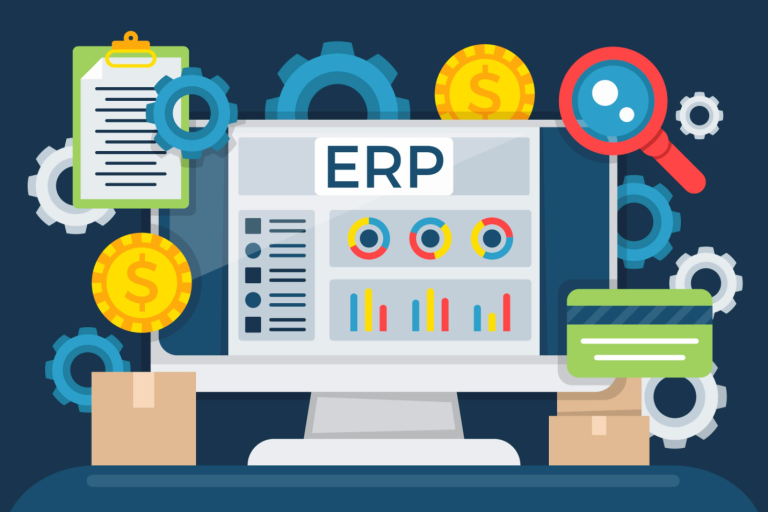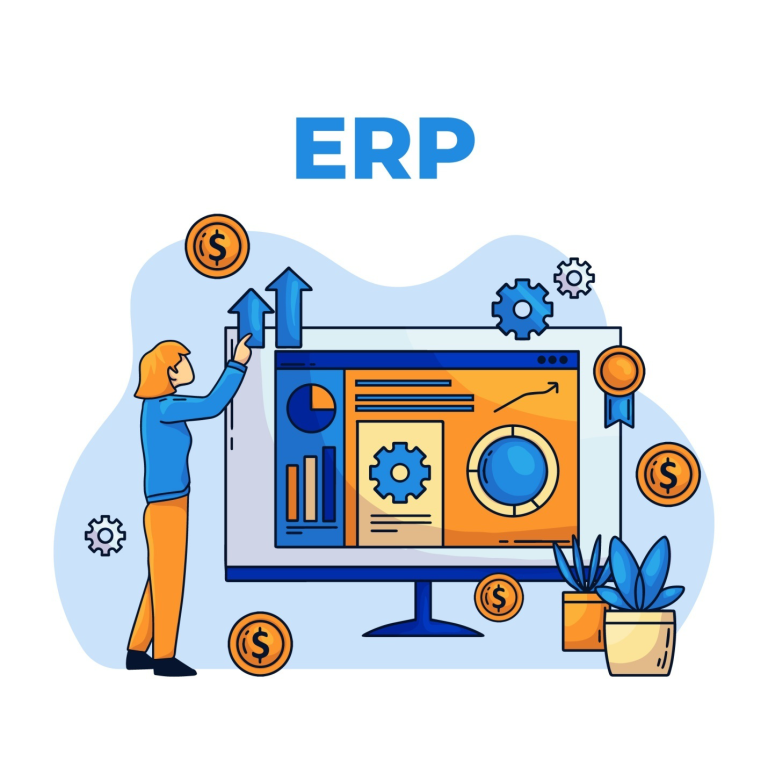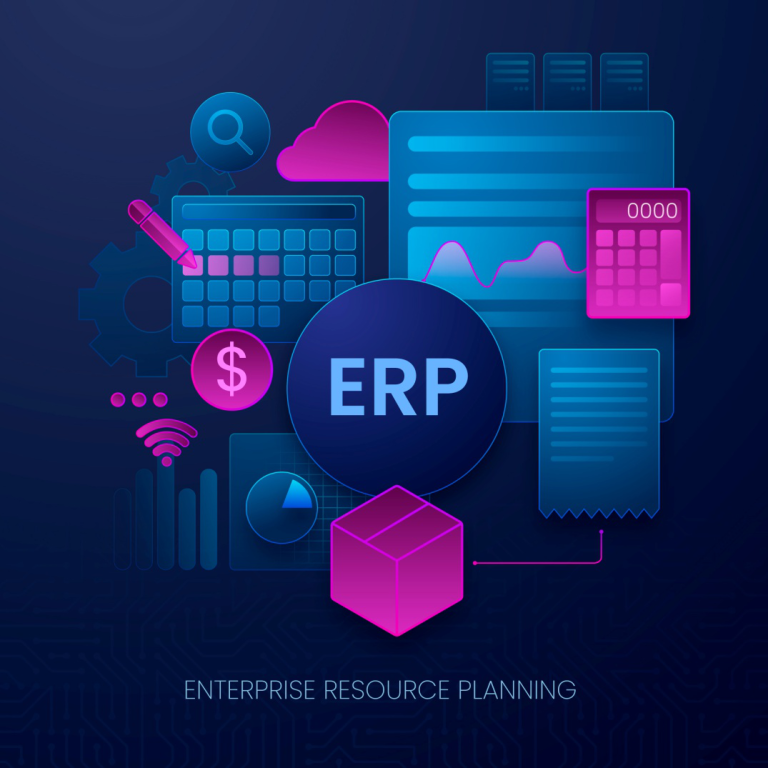Sage Intacct and Sage 300 solutions have redefined the way organizations operate and thrive. With a laser focus on delivering unparalleled benefits, Sage Intacct and Sage 300 benefits include innovation, driving efficiency, streamlining processes, and ultimately empowering businesses to reach new heights of success.
Continue reading to explore Sage Intacct and Sage 300 benefits in detail as we look into the transformative capabilities of these cutting-edge platforms.
Understanding Sage Intacct and Sage 300 ERP
Sage Intacct and Sage 300 are comprehensive ERP platforms designed to centralize and automate various business processes, ranging from financial management to inventory control. While both solutions offer similar core functionalities, they cater to different business sizes and industries.
Sage Intacct is a cloud-based ERP system ideal for small to midsize businesses (SMBs) and growing enterprises. It provides real-time financial insights, advanced reporting capabilities, and seamless integration with other business applications.
On the other hand, Sage 300, formerly known as Accpac, targets midsize to large enterprises with its robust suite of features, including accounting, distribution, and manufacturing modules.
Sage Intacct and Sage 300 Benefits Your Digital Transformation
In the era of digital transformation, businesses are continually seeking ways to adapt, innovate, and stay ahead of the curve.
1. Driving Digital Agility
Sage 300 and Sage Intacct empower businesses with the agility to adapt to evolving market dynamics, seize new opportunities, and stay ahead of the competition.
With their flexible architecture, modular design, and cloud-based deployment options, these ERP solutions enable businesses to scale operations, customize workflows, and embrace change with ease.
2. Enabling Seamless Integration
Sage 300 and Sage Intacct excel in integration capabilities, seamlessly connecting with a myriad of third-party applications, including CRM systems, e-commerce platforms, supply chain management software, and business intelligence tools.
This seamless integration facilitates the flow of data across the organization, breaking down silos and empowering cross-functional collaboration.
3. Empowering Data-driven Decision-making
Sage 300 and Sage Intacct serve as data hubs, aggregating and analyzing vast amounts of enterprise data to uncover actionable insights.

With advanced reporting tools, customizable dashboards, and real-time analytics capabilities, these ERP solutions empower businesses to derive meaningful insights from their data, identify trends, and make data-driven decisions with confidence.
4. Enhancing Customer Experience
Sage 300 and Sage Intacct play a pivotal role in enhancing the customer experience by streamlining processes, improving service delivery, and personalizing interactions. With integrated CRM capabilities, businesses can capture customer data, track interactions, and deliver personalized experiences across every touchpoint.
5. Future-proofing Your Business
Sage 300 and Sage Intacct future-proof businesses by providing a scalable and adaptable foundation for growth.
With their modular architecture, open APIs, and continuous updates, these ERP solutions evolve alongside businesses, accommodating changing requirements, emerging technologies, and evolving market trends.
10 Key Sage Intacct and Sage 300 Benefits
Here are 10 key Sage Intacct and Sage 300 benefits, elaborated in detail:
1. Real-time Financial Insights
Both Sage Intacct and Sage 300 provide businesses with real-time access to critical financial data, enabling stakeholders to make informed decisions swiftly.
By consolidating data from various departments, these ERP systems offer a comprehensive view of the organization’s financial health, including revenue, expenses, cash flow, and profitability.
Real-time insights empower businesses to identify trends, detect anomalies, and respond proactively to market changes, giving them a competitive edge in today’s dynamic business environment.

2. Automated Workflows
Manual processes are not only time-consuming but also prone to errors. One of the major Sage Intacct and Sage 300 benefits is streamlining workflows by automating repetitive tasks such as invoice processing, expense management, and purchase order approvals.
By eliminating manual intervention, businesses can improve efficiency, reduce processing times, and minimize the risk of errors or discrepancies.
Automated workflows also enhance compliance by enforcing standardized processes and audit trails, ensuring consistency and accuracy across the organization.
3. Robust Reporting Tools
Effective decision-making relies on accurate and timely reporting. Sage Intacct and Sage 300 offer robust reporting tools that enable businesses to generate customized reports, dashboards, and key performance indicators (KPIs) tailored to their specific needs.
These reporting capabilities empower users to track performance metrics, monitor financial trends, and gain actionable insights into business operations.
Whether analyzing sales performance, monitoring inventory levels, or assessing project profitability, businesses can leverage these reporting tools to drive strategic decision-making and optimize performance.
4. Enhanced Compliance
Compliance with regulatory requirements is a top priority for businesses across industries. Sage Intacct and Sage 300 help businesses stay compliant by automating compliance processes, enforcing internal controls, and maintaining audit trails.
With built-in compliance features and configurable security settings, these ERP systems ensure data integrity, privacy, and regulatory adherence.
Whether complying with industry-specific regulations such as GAAP, SOX, or GDPR, businesses find Sage Intacct and Sage 300 benefits particularly helpful in mitigating compliance risks and maintaining regulatory compliance seamlessly.

5. Improved Cash Flow Management
Cash flow management is critical for the financial health and sustainability of businesses.
Sage Intacct and Sage 300 offer robust cash management capabilities, allowing businesses to track cash inflows and outflows, forecast cash flow projections, and optimize working capital.
With automated invoicing, payment reminders, and cash flow forecasting tools, Sage Intacct and Sage 300 ERP empower businesses to optimize cash flow management and maintain liquidity.
6. Scalability and Flexibility
As businesses grow and evolve, their ERP requirements may change. Sage Intacct and Sage 300 are highly scalable solutions that can adapt to the changing needs of businesses.
Whether they are expanding into new markets, adding new product lines, or acquiring other companies. With flexible deployment options, customizable workflows, and modular design, these ERP systems enable businesses to scale operations seamlessly without compromising performance or efficiency.
From deploying additional modules to integrating with third-party applications or accommodating increased user volumes, Sage Intacct and Sage 300 provide the scalability and flexibility businesses need to support growth and expansion initiatives.
7. Streamlined Inventory Management
Effective inventory management is essential for optimizing warehouse operations, minimizing stockouts, and maximizing inventory turnover.
Sage Intacct and Sage 300 offer advanced inventory management features, allowing businesses to track inventory levels, manage stock movements, and optimize replenishment strategies.
With real-time visibility into inventory across multiple locations, businesses can improve inventory accuracy, reduce carrying costs, and enhance order fulfillment processes.
8. Seamless Integration
Integration with other business applications is essential for maximizing the value of ERP investments and streamlining business processes.
Sage Intacct and Sage 300 offer seamless integration capabilities, allowing businesses to connect with a wide range of third-party applications, including CRM systems, e-commerce platforms, payroll solutions, and business intelligence tools.
Whether integrating with Salesforce, Shopify, or Tableau, businesses can leverage pre-built connectors, APIs, and middleware to exchange data seamlessly between systems, eliminate data silos, and automate end-to-end processes.
9. Enhanced Customer Experience
Delivering exceptional customer experiences is key to building customer loyalty and driving revenue growth.
Sage Intacct and Sage 300 help businesses enhance customer experiences by streamlining order management, accelerating order fulfillment, and providing personalized service.
With integrated CRM capabilities, businesses can capture customer interactions, track sales opportunities, and deliver personalized marketing campaigns.
Whether serving B2B or B2C customers, Sage Intacct and Sage 300 enable businesses to deliver seamless omnichannel experiences that drive customer satisfaction and loyalty.
10. Data Security and Privacy
Protecting sensitive data and ensuring privacy compliance are paramount for businesses in today’s digital age. Sage Intacct and Sage 300 prioritize data security and privacy by implementing robust security controls, encryption protocols, and access permissions.
With role-based security, audit trails, and data encryption, these ERP systems safeguard sensitive information against unauthorized access, data breaches, and cyber threats.
Whether storing financial data, customer information, or intellectual property, businesses can trust Sage Intacct and Sage 300 to maintain the confidentiality, integrity, and availability of their data.
Selecting the Right ERP Solution
While Sage Intacct and Sage 300 benefits go beyond traditional solutions, it’s important to choose the right ERP solutions that fit your unique needs.
Here’s a detailed guide on how businesses operating in different industries can explore Sage Intacct and Sage 300 ERP benefits while making a decision:
1. Assess Business Size and Complexity
Small to Midsize Businesses (SMBs):
For SMBs, such as retail stores, restaurants, hospitality, service, and nonprofits verticals, , Sage Intacct can be an excellent choice.
Its user-friendly interface, cloud-based architecture, and scalability make it ideal for businesses looking to streamline financial management, automate processes, and gain real-time insights without the complexity of larger ERP systems.

Midsize to Large Enterprises:
In industries like manufacturing, distribution, and construction, where operations are more complex and multifaceted, Sage 300 offers the depth of functionality needed to manage diverse business processes effectively.
Its modular design allows businesses to tailor the system to their specific requirements, whether they need advanced inventory management, project accounting, or multi-currency support.
2. Consider Industry-specific Needs
Manufacturing:
Manufacturers require solutions capable of managing intricate supply chains, production schedules, and quality control processes.
Sage 300 excels in this regard with its robust manufacturing module, which enables businesses to optimize production processes, track work-in-progress (WIP), and ensure compliance with industry regulations.
Retail:
Retailers need ERP systems that can handle inventory management, point-of-sale (POS) transactions and omnichannel sales.
Sage Intacct’s cloud-based architecture and seamless integration with e-commerce platforms like Magento (Adoba Commerce) make it an excellent choice for retail businesses looking to centralize operations, improve inventory visibility, and enhance customer experiences.
3. Evaluate Integration Capabilities
Professional Services:
Professional service firms, such as consulting agencies, law firms, and architectural practices, rely on ERP systems to manage projects, track billable hours, and streamline resource allocation.
Sage Intacct’s integration with project management software like Asana and Trello allows these businesses to synchronize project data, automate billing processes, and gain insights into project profitability.
Healthcare:
Healthcare organizations, including hospitals, clinics, and medical practices, have unique ERP requirements related to patient billing, electronic health records (EHR), and regulatory compliance.
Sage 300 offers specialized modules for healthcare providers, enabling them to manage patient accounts, process insurance claims, and maintain HIPAA compliance seamlessly.
4. Decide on the Deployment Model
Cloud vs. On-premise Deployment:
While cloud-based ERP solutions offer flexibility, scalability, and accessibility, some businesses may prefer the control and security of an on-premise deployment.
Sage Intacct’s cloud-native architecture provides businesses with the agility to adapt to changing market conditions and scale operations as needed, whereas Sage 300 offers the flexibility to choose between cloud and on-premise deployment based on their specific requirements and preferences.
5. Evaluate Cost and ROI
Construction:
Construction companies face unique challenges related to project management, job costing, and subcontractor management. Sage 300 construction and real estate module is tailored to the needs of construction firms, enabling them to track project costs, manage change orders, and streamline payroll processing.
Financial Services:
Financial services firms, including banks, credit unions, and investment firms, require ERP solutions that can handle complex regulatory requirements, risk management, and financial reporting.

Sage Intacct’s comprehensive financial management capabilities, combined with its built-in compliance features and audit trail functionality, make it an ideal choice for financial services organizations looking to enhance transparency, mitigate risks, and ensure regulatory compliance.
Microsys – Your Trusted Sage Consultant
Selecting and implementing an ERP solution can be a daunting task, but you don’t have to navigate it alone.
As a leading provider of Sage ERP solutions, Microsys specializes in helping businesses harness Sage Intacct and Sage 300 benefits to the fullest.
Our team of experienced consultants will work closely with you to understand your unique business needs, recommend the right ERP solution, and ensure a seamless implementation process.
From initial planning and configuration to training and ongoing support, we are committed to helping you achieve optimal performance and maximize the value of your ERP investment. Contact our Sage consultants in Markham, Newmarket, North York, Toronto, Hamilton, Aurora, and Stouffville.



